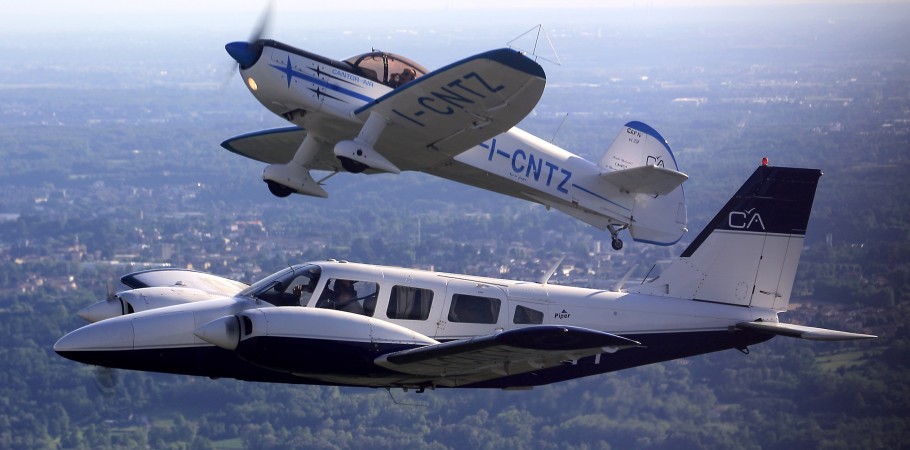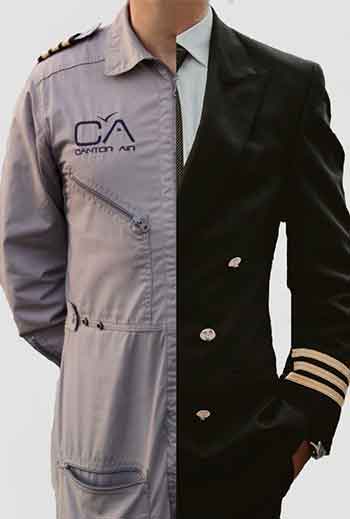The course allows to safely operate the duties of Responsible Pilot during aerobatic flights
Info
- Theory: 6 hrs
- Practice: 6 hrs
- Duration: 7 days

The Aerobatic Rating, according to EASA regulations PART FCL.800, allows the holder to safely operate, in full safety, the duties of Responsible Pilot during aerobatic flights conducted with aircraft designed for that purpose.Pre-requisites for admission:
- Possession of a valid PPL (A) license or higher with SEP.
- Be in possession of mental and physical fitness certificate issued by an aviation medical specialist (AME), based on the type of license held.
- Have completed at least 30 hours of flight time;
Course schedule.
Total hours of theoretical instruction: 06:00
Total hours of practical instruction: 06:00
Theory:
Total hours of theoretical instruction: 06:00
Total hours of practical instruction: 06:00
Theoretical part involves the conduct of 6 hours of instruction that the ATO offers in presence.
NB: It is also possible, should the candidate request it, to take the lessons via e-learning with an online system that will make all the theoretical knowledge shared in class available at home as well.
Flight Program:
The flight program includes no less than 6 hours of training on MUDRY CAP10C aircraft from the school's fleet.
Scheduled Exams:
There are no theoretical or practical exams for this training. In the final flight mission, the student must demonstrate competence and ability to recover from a disruptive or potential LOCI situation.
Course Duration:
The duration of the course is normally about 5-7 days but can be adapted to the needs of the candidate.
Acrobatics: this word carries with it an imagery of impossible, risky, fearsome actions and for this reason... AFFASCINATING. In reality, these are coordinated and precise manoeuvres that involve focused study, where nothing is left to chance but rather, every detail is carefully planned.
Thanks to CANTOR AIR flight school's CAP 10C aircraft, it will be possible to learn the art of aerobatics through an ad HOC course. The aerobatic qualification course will allow you to study and rehearse in the air every figure such as the vine, looping, inverted flight, imperial and related aerobatics; such choreographies will no longer be a dream, but you can make them a reality!
Cantor Air has gone through the delicate certification process and today is one of the leading schools to conduct the aerobatic qualification and aerobatic instructor courses.
Let's learn more about the CAP 10C aircraft
The CAP 10C is a single-engine two-seat side-by-side low-wing aircraft; its cruising speed is 250 km/h, its power about 200 Hp and its range even reaches 1200 km: light and compact enough to withstand external stresses of +6 G.
Together with our instructor Maurizio Costa, Italian champion of powered aerobatics and European and world championships, and other aerobatics professionals in the TEAM, you will be able to get the prestigious rating. Moreover, the best part of aerobatic flying is that, besides being adrenaline-pumping, exciting and the result of serious technical training, it will give you that GAP of knowledge to understand flight and its critical issues even better, leading you to be a better pilot.
Aerobatic flying: requirements and useful information
All this attention is due to the need to train a pilot who can handle complex situations and always have total control of the aircraft he or she is operating; for an aerobatic pilot, for example, engaged in complex figures of high visual impact, at very high altitude, becomes essential.
Don't panic; controlling an aircraft during creative displays in the high skies has no age restrictions, but it is necessary to hold at least a PPL(A) flight license, to which one can add, precisely, the aerobatic rating.
Other requirements are medical fitness for an examination of at least second class; having obtained, precisely, a PPL(A) license or higher with at least 30 hours of flight time (conducted following the PPL examination). The aerobatic pilot rating includes at least 6 hours of theoretical lessons and 6 hours of practical instruction, and training, facilitated by the side-by-side position of the two seats on the aircraft, will be given only by experienced qualified aerobatic instructors.
The dual-command system will supplement the theory and enable the issuance of the rating, an even higher level in handling and knowledge of flying skills; lessons on flight aerodynamics and missions, on the other hand, will lead to a thorough knowledge of aerobatic dynamics.
Why become an aerobatic pilot?
After daydreaming about loops, spins, and horizontal-to-vertical transitions that you can do with the CAP 10C, come back to reality: why should you become an aerobatic pilot? The reasons are more than you can think of. Indeed, the licensed aerobatic pilot can take advantage of his or her rating for reasons of recreation (and personal gratification) such as the opportunity to participate in events, national and other championships, or freestyle competitions. In addition to this, there are also reasons related to personal growth as a pilot, such as improving handling skills, control and fluidity of manoeuvres through sustained technical and practical training.
After flight safety events that occurred on the handling of airliners in past years, the Authorities'; attention has also shifted to personal skills. Having pilots with aerobatic capability, provides airlines, a supplement and complement to the individual pilot's management skills, increasing the canons of reaction and safety in the conduct of aircraft.
Choosing the path of the aerobatic pilot means choosing freedom and invention, but also the challenge of performing unique and precise stunts. Our CAP10C, will be the tool for YOUR professional improvement.
Why choose us
Want to Know More?
The Cantor Air team is ready to answer any questions regarding our services and offers.













